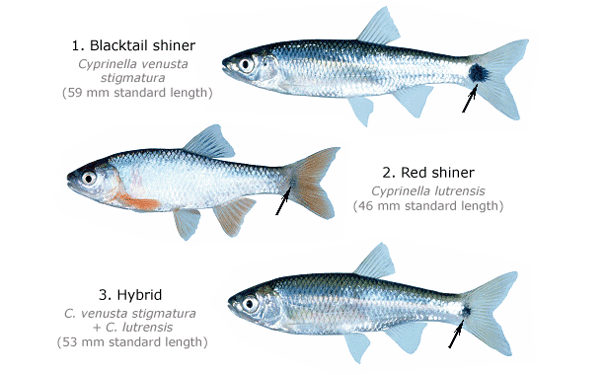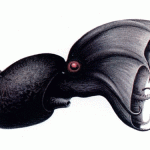
BPA caused changes in appearance in some fish, resulting in inter-species mating due to the confusion. Image: US Geological Survey
The hormone-disrupting chemical makes it hard for fish to recognise their own species.
Bisphenol-A (BPA) is blurring the lines between species of fish, potentially sparking a boom in interspecies mating that could ripple throughout ecosystems.
BPA is an industrial chemical that mimics estrogen, allowing it to disrupt hormones in a range of different animals. It’s used as a hardening agent in many types of plastic, and its widespread use makes it a common pollutant in nature.
“Chemicals from household products and pharmaceuticals frequently end up in rivers, and BPA is known to be present in aquatic ecosystems across the United States,” says Jessica Ward, ecologist at the University of Minnesota, in the US. “Until now studies have primarily focused on the impact to individual fish, but our study demonstrates the impact of BPA on a population level.”
In the study, published in the journal Evolutionary Applications, Ward collected blacktail shiners and red shiners, two fish found in rivers and streams across the US. The researchers wanted to find out how BPA affected both species. They kept various individuals separated for 14 days in tanks, some of which contained BPA. After two weeks they introduced fish from the different tanks, and monitored their physiological or behavioural changes (size, colour, courtship displays or mate choice).
“Depending on when the fish is exposed, BPA can affect growth, gonadal physiology, sperm and egg production, behaviour, and the expression of secondary sexually selected traits such as breeding colouration,” Ward explains. “Exposure can have both ecological and evolutionary effects on populations and communities. It can lead to species declines via the loss of reproductive effort, or hybridisation. It can also lead to altered selection regimes.”
In the shiners, BPA altered the size, colouring and behaviour of some fish. For example, male red shiners exposed to the chemical showed less intensity in body colour than unexposed males. Such changes make the fish look like other species of shiners, which can “break down sexual isolation between native and invasive species,” according to Ward.
This process poses long-term ecological consequences, especially in areas threatened by the introduction of invasive species. BPA can escalate the loss of native biodiversity by breaking down species barriers and promoting the invader. The researchers also note that the hybrids have been known to dominate shiner habitats, suggesting that exposure to BPA could doom some native species.
“Our results contribute to a growing body of evidence demonstrating that the effects of human-mediated environmental alteration can extend well beyond individual-level reproductive success, with significant evolutionary consequences for populations and species,” says Ward.






